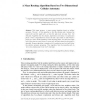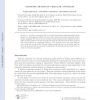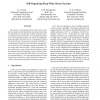63 search results - page 8 / 13 » Topological properties of sand automata as cellular automata |
85
Voted
ACRI
2004
Springer
15 years 3 months ago
2004
Springer
Abstract. We outline the basic principles of neuropercolation, a generalized percolation model motivated by the dynamical properties of the neuropil, the densely interconnected neu...
ISVLSI
2006
IEEE
15 years 4 months ago
2006
IEEE
Abstract— Research in the fields of physics, chemistry and electronics has demonstrated that Quantum-dot Cellular Automata (QCA) is a viable alternative for nano-scale computing...
ACRI
2006
Springer
15 years 4 months ago
2006
Springer
This paper propose a maze routing algorithm based on cellular automata. The aim of this algorithm is find the shortest path between the source cell and the target cell , so that th...
STACS
2010
Springer
15 years 5 months ago
2010
Springer
A cellular automaton (CA) is a parallel synchronous computing model, which consists in a juxtaposition of finite automata (cells) whose state evolves according to that of their ne...
75
Voted
SASO
2008
IEEE
15 years 4 months ago
2008
IEEE
We propose a self-organizing sleep-wake sensor system that is scalable, easily implemented, and energy conserving. An application of concepts from cellular automata theory account...



